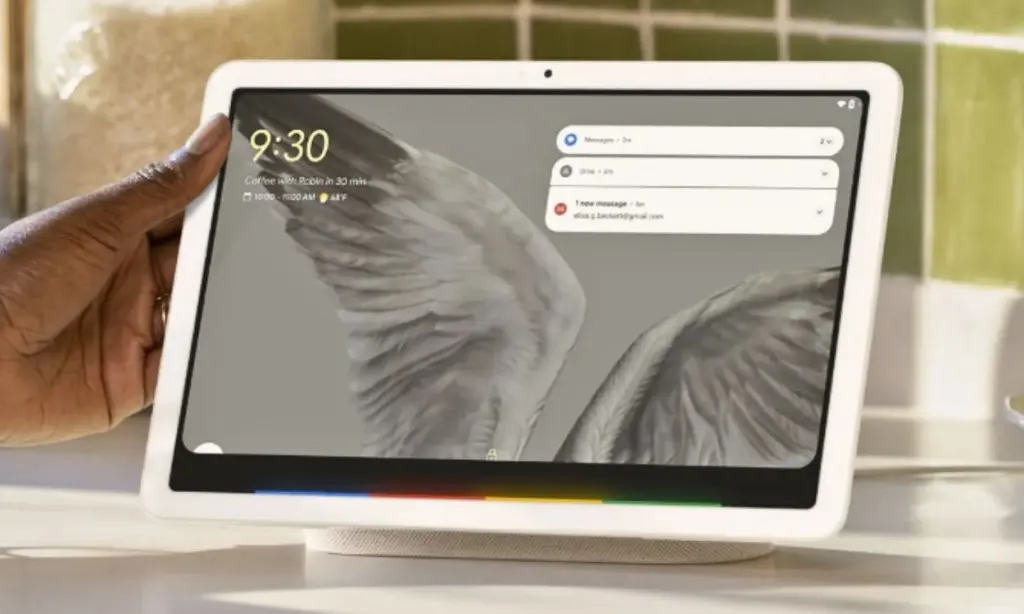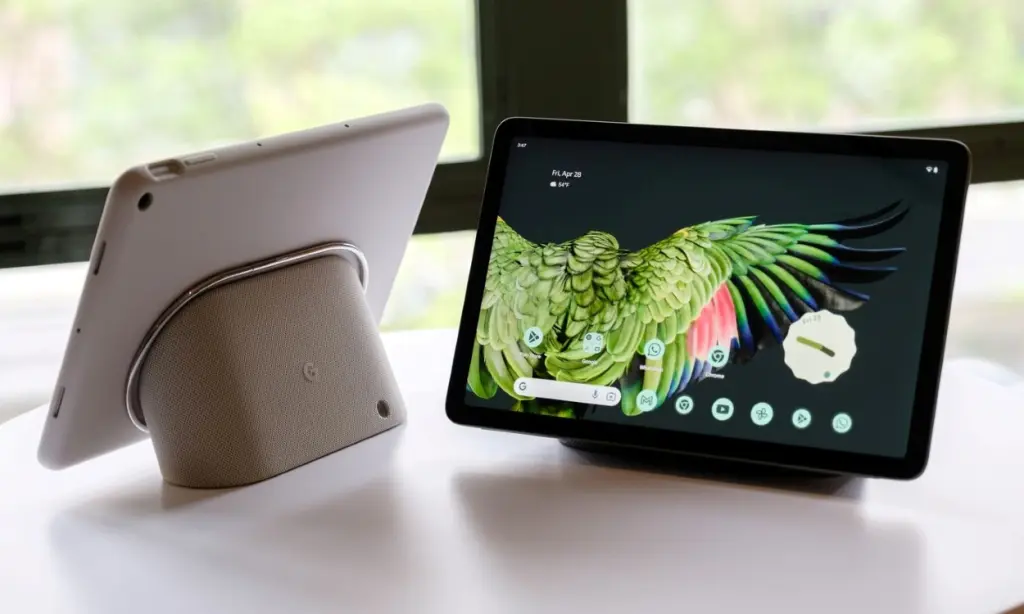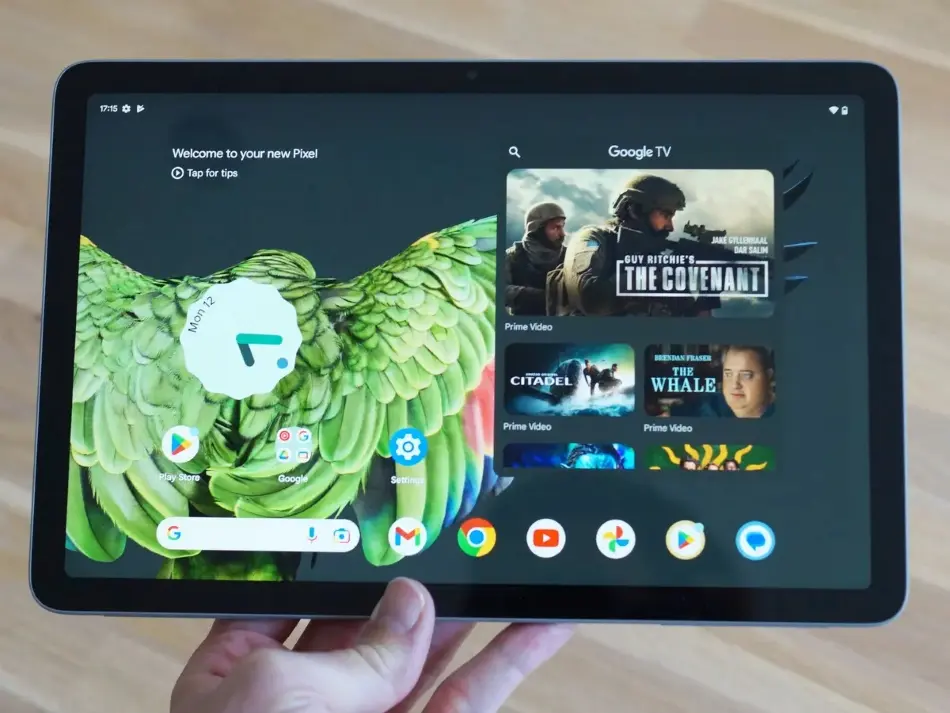
Google has been endeavoring to establish a foothold in the Android tablet market for more than a decade, yet with limited success. Their latest endeavor, the Pixel tablet, garnered lukewarm reviews from both critics and consumers, failing to meet Google’s expectations. What factors contributed to the underwhelming performance of the Pixel tablet? And what strategic adjustments should Google contemplate to ensure the success of their next Pixel tablet? Let’s delve into these questions.
What Were the Issues with the First Pixel Tablet?
The Pixel tablet isn’t inherently flawed. However, it grapples with a significant identity crisis. Google’s marketing approach portrays the Pixel tab more as a Nest Hub alternative, emphasizing its bundled speaker dock. While this feature may appeal to some users, prioritizing it detracted attention from the tablet’s core functionality.

Additionally, the Pixel tablet faced criticism for its mediocre hardware. With a 60 Hz display, users perceived a lack of fluidity, particularly in comparison to the high refresh rate displays prevalent in the market. Furthermore, the tablet’s battery capacity was deemed insufficient for its intended usage, and the software experience fell short, merely extending stock Android to fit the larger display. The absence of tablet-specific features further contributed to an underwhelming overall experience.
The final hurdle was its pricing. Priced at $500, including the speaker dock, the Pixel Tablet struggled to justify its cost, especially considering superior alternatives available at lower price points, such as Samsung’s Galaxy Tab S8 or Xiaomi’s Pad 6. Moreover, convincing consumers to invest in a $500 detachable Nest Hub proved challenging. Perhaps Google has taken note of this feedback, as they now intend to offer the tablet as a standalone device for $350 , a significantly more appealing price point.
How Can Google Revise Its Tablet Strategy for Success?
Although there’s currently no indication of Google developing a successor to the Pixel Tablet, I strongly believe that the company should reconsider its tablet strategy from the ground up. I have several suggestions that could assist Google in avoiding the missteps of its previous attempt. Let’s explore these recommendations.
1. Abandon the Dock and Other Extraneous Features

Google has a history of lacking confidence in its products, often feeling the need to attach gimmicks to boost sales. This was evident with the Pixel Tablet and its dock. While the concept wasn’t necessarily bad, it should not have been the primary focus.
Users might have been more receptive if Google had only shipped a tablet at a lower price, as reportedly planned. For their next tablet, they should concentrate on the product itself rather than introducing new gimmicks.
2. Improve both internally and externally
Another concern revolved around the hardware, which was rather ordinary, to put it mildly. A 60 Hz refresh rate display seems out of step with current expectations (yes, Apple, we’re watching). Additionally, the IPS LCD panel lacked sufficient brightness. Thus, an upgrade to a high refresh rate display with enhanced brightness would be welcomed.

The Google Pixel Tablet featured four speakers, a common configuration for tablets, but their sound output was underwhelming in terms of volume. Similarly, the microphone quality left much to be desired, highlighting areas for Google to enhance. Additionally, the inclusion of haptics should not be overlooked this time, unlike in the previous iteration.
When it comes to cameras, Google could opt for an ultra-wide-angle lens for the selfie camera, enhancing capabilities for video calls and face unlock. As Google plans to continue using their Tensor SoCs, there isn’t much more to discuss in that area.
Should a Pixel Tablet 2 materialize, it would likely be equipped with a Tensor G3 chipset, offering an improvement over the previous generation.
3. A tablet Has Its Unique Requirements
Now, onto the crucial aspect: software. While Android has evolved considerably for smartphones, it still lacks in catering to the specific needs of tablets and larger-screen devices. Recognizing this gap, other brands implement modifications and essential features to enhance their user interface for larger screens, making it more user-friendly.
Google should heed the examples set by manufacturers like the creators of the Galaxy Tab S9 series and Xiaomi’s Pad 6. These devices not only incorporate tablet-specific features into their Android systems but also introduce companion accessories to enhance the overall user experience.
Moreover, there are numerous features I long for. Functions such as free-form windows remain under development in Vanilla Android. I envision a sidebar that can be effortlessly pulled out from any corner of the display, facilitating easier access to apps or shortcuts. Incorporating gesture shortcuts, like swiping down with two fingers to activate split-screen mode or capture a screenshot, would effectively leverage the additional screen space.

Rather than boldly leading the charge and setting a new standard, Google is opting for incremental improvements to its tablet experience. Only recently have they introduced the capability for third-party apps to take over the entire screen. The forthcoming Android 15 update will bring support for lock screen widgets in tablets. However, there remains a pressing need for enhanced productivity features.
4. Focus on Making Pixel Tablet Practical
Upon release, the Pixel Tablet lacked essential accessories such as a stylus and a keyboard attachment. Rumors suggest that a keyboard attachment may be introduced with the tablet’s re-release, to be sold separately. In my opinion, these accessories should have been included from the start. A stylus or keyboard would have been far more appreciated than a dock.

Including either one of those accessories would greatly benefit individuals seeking to enhance productivity with the Pixel tablet. Therefore, bundling such accessories with the next iteration would solidify the tablet’s reputation as a productivity-oriented device.
As someone who has been tracking Google’s tablet journey since the Honeycomb days, I truly hope to see the tech giant deliver a successful product. The Nexus 7, cherished by our Editor, remains one of their finest tablets in my opinion. Here’s to hoping that Google can recapture that same magic with their next tablet, if they have plans to release one.
I’m eager to hear about any tablet-related announcements at the upcoming Google I/O 2024 event. What are your insights on this matter? What adjustments do you believe Google should make to their Pixel tablet strategy? Let us know in the comments below.

0 Comments